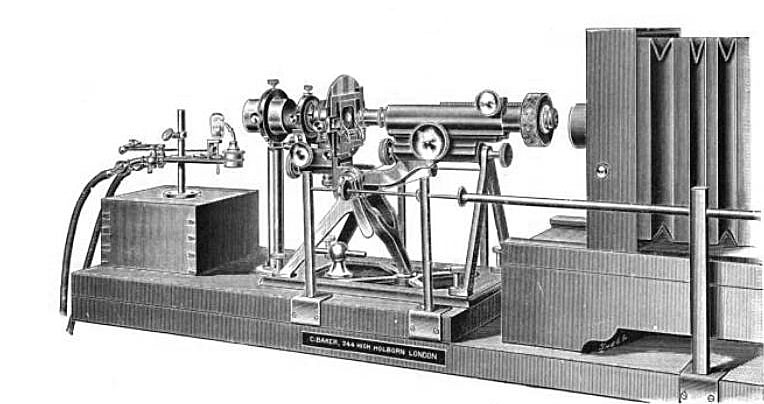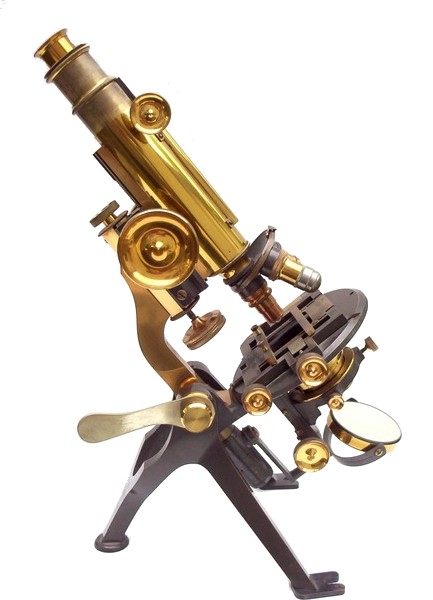
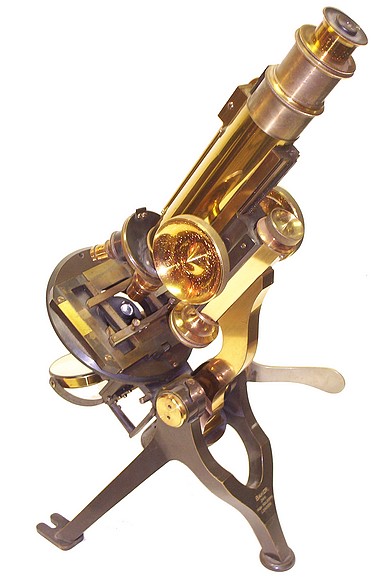
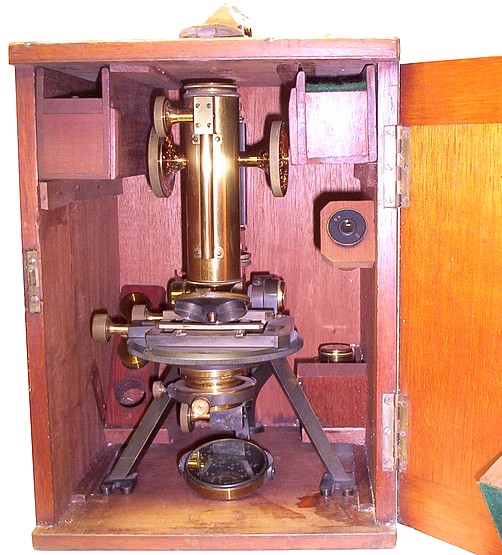
The following was extracted from The Microscope by Hogg 1898:
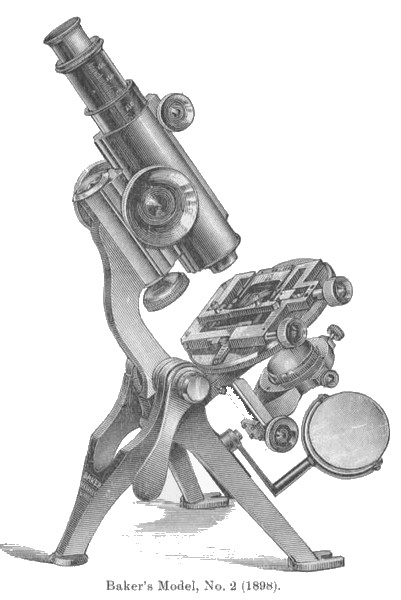
Of Messrs. Baker's larger stands, the Improved " Nelson Model," No. 2 (Fig. 88) stand is selected in preference to their more elaborate No. 1, and their simpler form, No. 3, as a high-class instrument, and one well suited for fine critical work ; the former being somewhat better, only from having extra adjustments; the latter possessing no superior advantage over the " Advanced Students' " Microscope. This microscope is mounted on a solid tripod foot, which insures stability, whether placed in a vertical, horizontal, or inclined position; the front toes are slotted, so that they may be clamped to the base plate of a photo-micro- graphic apparatus, first introduced for photo-micrographic work, and will also be found convenient in ordinary work; as the fine adjustment milled head is placed at the bottom of the pillar, instead of at the top, the more usual place. For photo-micrographic work the advantage is that the strain of the pulley in such apparatus actuates the fine adjustment, and is less liable to cause vibration of the instrument. The advantage when the instrument is used for ordinary work lies in the fact that the weight of the hand is rested on the top of the tripod, thus admitting of steadier movement of the milled head. The fine adjustment is obtained by a "Campbell" differential screw, each revolution of which is equal to 1/200 m.m. The draw-tubes being graduated in m.m., allow of either short or long tube objectives being used, closing up to 150 m.m. and extending to 280 m.m., the rack and pinion adjustment to the lower tube affording a ready means of correction for cover-glass thickness. The eye-piece gauge, as will be seen from its dimensions is of large size, being the same as that adopted by Zeiss for his long tube compensating oculars; smaller eye-pieces can, however, be adapted at any time.
The mechanical rotating stage is divided on brass to 1/100-inch, with clamping bars and stop, by which a specimen can always be brought back to a certain position for registration. The sub-stage has rack-work focusing adjustment, and centering screws; a fine adjustment is added, if desired.
